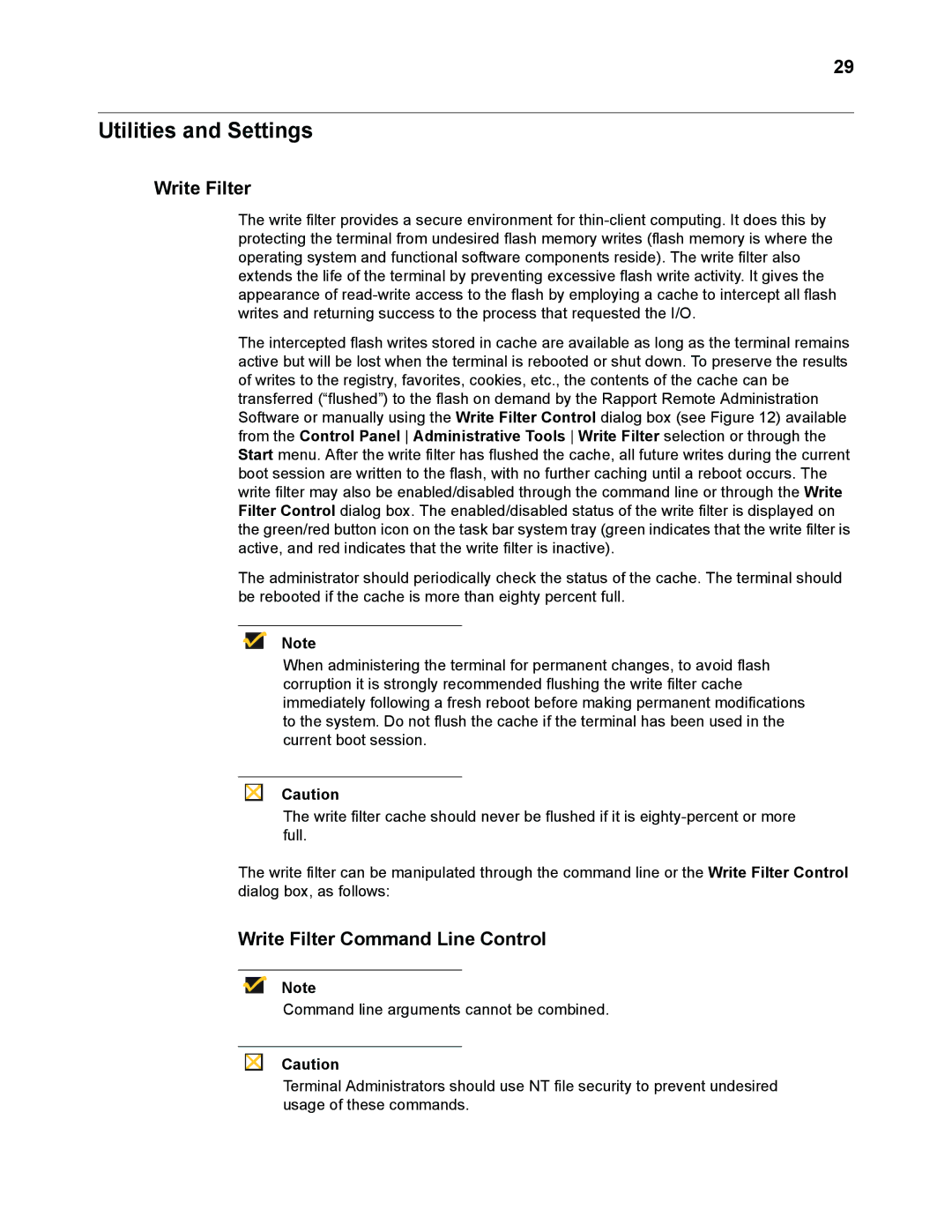
29
Utilities and Settings
Write Filter
The write filter provides a secure environment for
The intercepted flash writes stored in cache are available as long as the terminal remains active but will be lost when the terminal is rebooted or shut down. To preserve the results of writes to the registry, favorites, cookies, etc., the contents of the cache can be transferred (“flushed”) to the flash on demand by the Rapport Remote Administration Software or manually using the Write Filter Control dialog box (see Figure 12) available from the Control Panel Administrative Tools Write Filter selection or through the Start menu. After the write filter has flushed the cache, all future writes during the current boot session are written to the flash, with no further caching until a reboot occurs. The write filter may also be enabled/disabled through the command line or through the Write Filter Control dialog box. The enabled/disabled status of the write filter is displayed on the green/red button icon on the task bar system tray (green indicates that the write filter is active, and red indicates that the write filter is inactive).
The administrator should periodically check the status of the cache. The terminal should be rebooted if the cache is more than eighty percent full.
Note
When administering the terminal for permanent changes, to avoid flash corruption it is strongly recommended flushing the write filter cache immediately following a fresh reboot before making permanent modifications to the system. Do not flush the cache if the terminal has been used in the current boot session.
Caution
The write filter cache should never be flushed if it is
The write filter can be manipulated through the command line or the Write Filter Control dialog box, as follows:
Write Filter Command Line Control
Note
Command line arguments cannot be combined.
Caution
Terminal Administrators should use NT file security to prevent undesired usage of these commands.
